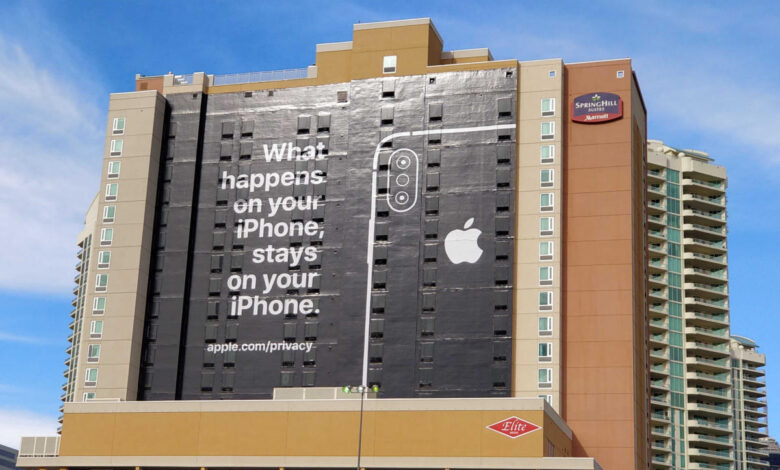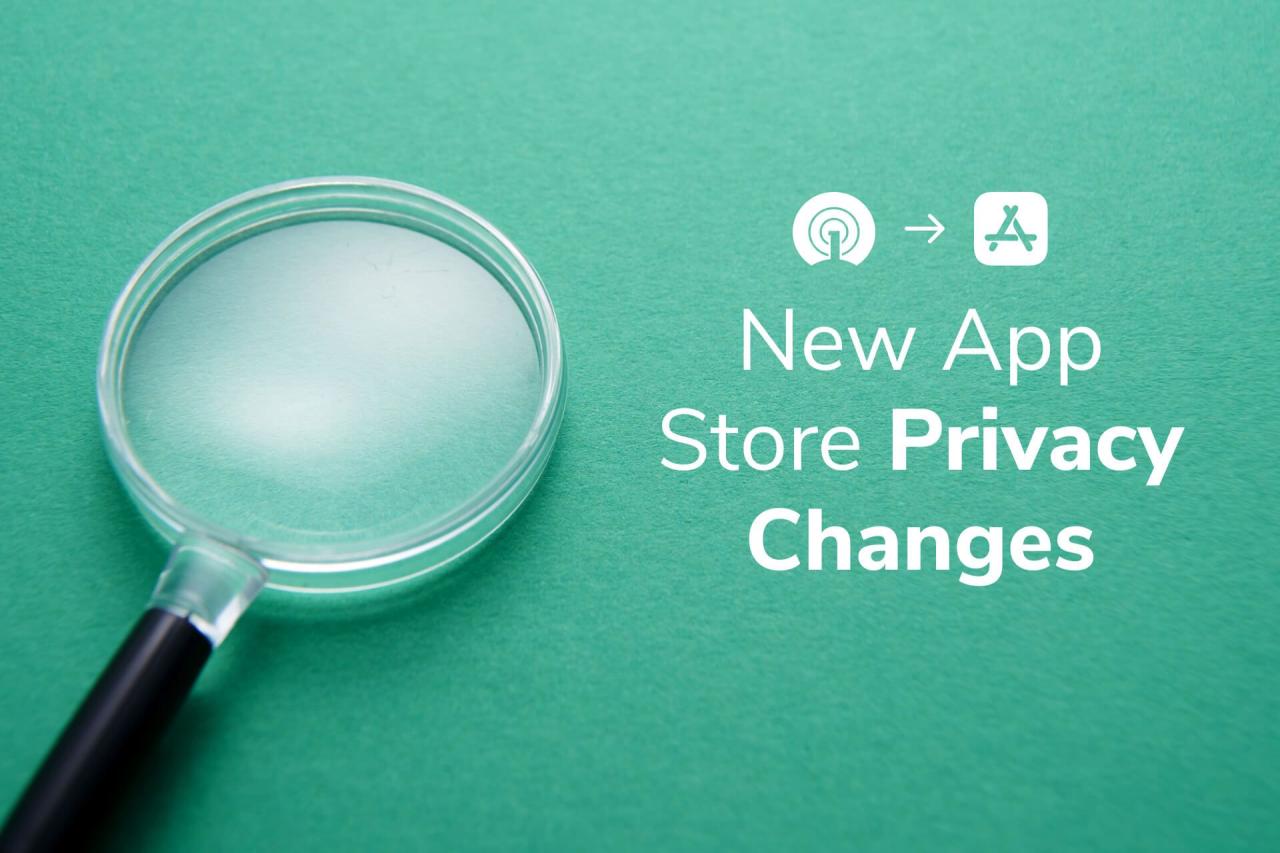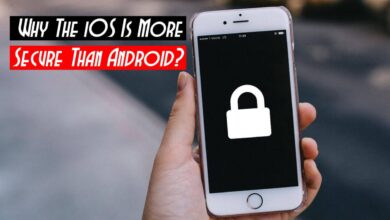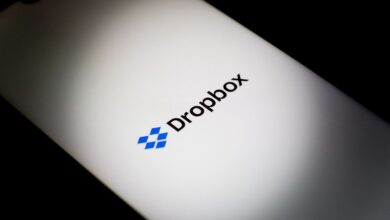
Apple Inc to Start Take App Privacy Notifications Seriously
Apple Inc to Start Take App Privacy Notifications Seriously – that’s the headline grabbing everyone’s attention! For years, Apple’s stance on user privacy has been a complex mix of strong statements and sometimes questionable practices. Now, it seems a genuine shift is underway, with a renewed emphasis on clear and upfront app privacy notifications. This means big changes for app developers, users, and the entire app ecosystem.
Let’s dive into what’s happening and what it all means.
This increased focus on privacy notifications isn’t just about ticking a box; it’s about fundamentally altering the relationship between users, apps, and the data they generate. We’ll explore the potential motivations behind this change, the specific improvements Apple has implemented, and the ripple effects across the industry. From developer challenges to user perceptions, we’ll examine the full spectrum of this evolving privacy landscape.
Apple’s Past App Privacy Practices

Apple has long presented itself as a champion of user privacy, contrasting sharply with the data-centric models of competitors like Google and Meta. However, a closer look at their history reveals a complex narrative, one where their commitment to privacy has evolved significantly over time, marked by both progressive steps and moments of criticism. Understanding this evolution is crucial to evaluating their current approach and future promises.Apple’s historical approach to app privacy has been characterized by a gradual shift from a relatively hands-off approach to a more proactive and integrated system of privacy controls.
In the early years, Apple’s focus was primarily on providing a secure and user-friendly platform, with privacy considerations integrated less systematically. This contrasts with Google and Meta, which from their inception built business models heavily reliant on extensive data collection and targeted advertising. While Apple always had privacy policies, the level of detail and user control was considerably less robust than it is today.
Apple’s Privacy Policies Compared to Competitors
Apple’s initial approach to data collection was arguably less intrusive than that of Google and Meta. While Apple did collect data for analytics and improvement purposes, their business model wasn’t directly dependent on selling user data to third parties. Google and Meta, on the other hand, have built multi-billion dollar empires on precisely that – the targeted advertising fueled by the comprehensive profiling of user behavior.
This fundamental difference in business models has significantly shaped their respective approaches to data privacy. Google’s extensive tracking across its various services, and Meta’s reliance on user data for advertising revenue, have led to repeated controversies and regulatory scrutiny. Apple’s comparatively less aggressive data collection practices, even in its earlier years, placed them in a different category.
Past Controversies and Criticisms
Despite its reputation, Apple hasn’t been immune to criticism regarding its handling of user data. One example is the collection of user location data, which, while initially intended for service improvements, sparked controversy when its extent and potential for misuse became apparent. The company has faced scrutiny regarding its handling of user data in relation to law enforcement requests and government surveillance programs, leading to public debates about the balance between security and privacy.
Furthermore, Apple’s App Store policies, while aimed at protecting user data, have also faced criticism for their perceived lack of transparency and inconsistencies in enforcement.
Timeline of Apple’s Privacy Features and Policies
Understanding Apple’s evolution requires examining key milestones. A simplified timeline might include:
Early 2000s: Relatively limited privacy features, data collection primarily for internal improvements. Focus on a secure operating system rather than explicitly detailed user privacy controls.
Mid-2000s – Early 2010s: Gradual introduction of more explicit privacy settings and controls within iOS and macOS. Increased transparency in data collection practices, though still less comprehensive than later iterations.
2010s – Present: Significant advancements in privacy features, including features like App Tracking Transparency (ATT), which significantly limits the ability of apps to track users across other apps and websites. Increased emphasis on differential privacy techniques to protect user data while still allowing for data analysis.
The Shift Towards Stronger Privacy Notifications: Apple Inc To Start Take App Privacy Notifications Seriously
Apple’s increasingly robust approach to app privacy notifications isn’t a sudden shift; rather, it’s a culmination of several factors, including growing public awareness of data privacy concerns, increased regulatory pressure, and a likely strategic move to differentiate itself from competitors in the mobile ecosystem. This evolution represents a significant change in Apple’s public image and reflects a growing commitment to user data protection.The enhanced focus on privacy notifications isn’t just about ticking regulatory boxes; it’s about building and maintaining trust with users.
This proactive approach likely stems from a recognition that user trust is a valuable asset, particularly in a market saturated with apps vying for attention. By emphasizing transparency and control over data access, Apple aims to solidify its position as a privacy-conscious company.
iOS System Enhancements for Privacy Awareness
Apple’s iOS and iPadOS updates have incorporated several features designed to increase user awareness of data collection practices. These enhancements go beyond simple notifications; they empower users to make informed decisions about their data. For instance, the App Privacy Report provides a detailed overview of an app’s data access requests over the past seven days, allowing users to actively monitor and assess data usage.
Apple’s increased focus on app privacy notifications is forcing developers to rethink data handling. This shift highlights the importance of efficient, secure development practices, and that’s where platforms like Domino come in; check out this great article on domino app dev the low code and pro code future to see how they’re helping. Ultimately, adapting to Apple’s stricter rules means prioritizing user trust and transparent data management – a win-win for both developers and users.
Furthermore, features like App Tracking Transparency (ATT) give users explicit control over whether apps can track their activity across other companies’ apps and websites. These measures actively engage users in the privacy discussion, rather than passively informing them.
Examples of Improved Notification Clarity and Types
Prior to these improvements, app privacy notifications were often buried within lengthy terms of service agreements or presented in a way that lacked clarity. Apple has moved towards more concise and accessible notifications. For example, instead of a generic message stating an app is accessing location data, users now see precise details, such as the frequency of location access (always, when in use, or never).
Similarly, improved notification design incorporates clearer language and visually distinct indicators to highlight data collection practices. The introduction of the App Privacy Report is a prime example of this shift—providing a consolidated and user-friendly summary of app data access, replacing the need to piece together information from various settings.
Hypothetical User Interface for App Privacy Notifications, Apple inc to start take app privacy notifications seriously
Imagine a notification appearing upon app installation or first launch. Instead of a simple “This app may collect your data” message, the notification would present a concise, visually appealing summary. A card-like design could be used, with distinct sections for:* Data Types Collected: A bulleted list (e.g., Location, Contacts, Photos, Microphone). Each item could have a tappable icon for more detailed explanation.
Data Usage Purpose
A brief, clear description of why the app needs this data (e.g., “To provide location-based services,” “To personalize your experience”).
Data Sharing Practices
Clear indication of whether data is shared with third parties and, if so, with whom (e.g., “Data is not shared with third parties”).
Privacy Policy Link
A clearly labeled link to the full privacy policy, accessible with a single tap.This hypothetical design emphasizes clarity, conciseness, and user control. The user could then choose to accept or reject the app’s data access requests, providing informed consent. This visual representation aims for a better user experience compared to previous notification designs, which often felt overwhelming or unclear.
Impact on App Developers
Apple’s strengthened app privacy notifications, while beneficial for users, have presented significant challenges for app developers. The increased transparency surrounding data collection practices has forced developers to re-evaluate their monetization strategies and adapt their development processes, leading to a range of responses across the industry. The impact is multifaceted, affecting everything from development costs to the long-term viability of certain business models.The primary challenge stems from the need for greater transparency regarding data collection and usage.
Developers now need to clearly articulate how user data is collected, used, and protected within their apps. This requires careful consideration of privacy policies, consent mechanisms, and data minimization strategies. Failing to meet these stricter requirements can result in app rejection from the App Store, impacting revenue and brand reputation. The additional effort required for compliance adds significant development time and cost.
Challenges in App Monetization
Increased transparency in data collection practices has significantly impacted app monetization strategies reliant on extensive user data tracking. For example, advertising networks that rely on detailed user profiles for targeted advertising have faced limitations. Apps that previously used granular user data to personalize ads and generate revenue now must find alternative approaches. This shift has led some developers to explore alternative monetization methods such as subscriptions, in-app purchases, or freemium models, requiring a fundamental rethinking of their business models.
The transition isn’t always seamless and can result in temporary revenue loss while developers adapt. For instance, a game developer heavily reliant on targeted ads might experience a dip in revenue until they implement a successful in-app purchase system.
Developer Responses to New Regulations
App developers have responded to the stricter privacy regulations in diverse ways. Some have embraced the changes, proactively updating their apps to comply with the new rules and highlighting their commitment to user privacy as a brand differentiator. This proactive approach can enhance user trust and potentially lead to increased brand loyalty. Others have resisted the changes, viewing them as overly burdensome and potentially hindering their ability to compete.
A third group has adopted a wait-and-see approach, delaying updates until absolutely necessary. The responses reflect the varying priorities and resources available to different developers. Smaller developers, with limited resources, might struggle more with adaptation than larger corporations with dedicated privacy teams.
Cost-Benefit Analysis of Privacy Adaptation
The following table illustrates the potential costs and benefits for developers adapting to enhanced privacy measures. The figures are illustrative and will vary significantly depending on the app’s complexity, size of the development team, and existing data handling practices.
| App Category | Adaptation Cost (USD Estimate) | Potential Revenue Loss (USD Estimate) | Potential Brand Enhancement |
|---|---|---|---|
| Social Media | $50,000 – $200,000 | $10,000 – $50,000 (short-term) | Increased user trust, improved brand reputation |
| Mobile Game | $10,000 – $50,000 | $5,000 – $20,000 (short-term) | Enhanced user privacy, potentially attracting privacy-conscious players |
| Productivity App | $5,000 – $25,000 | Minimal to moderate (depending on monetization strategy) | Positive impact on brand perception, potential for premium pricing |
| E-commerce App | $20,000 – $100,000 | Variable, depending on reliance on targeted advertising | Improved user trust, potential for increased sales through enhanced transparency |
User Response and Perception
Apple’s strengthened app privacy notifications, while lauded by privacy advocates, have elicited a diverse range of reactions from users. Understanding these responses is crucial for assessing the overall impact of Apple’s initiative and its long-term implications for user trust and app ecosystem dynamics. The initial shock of more frequent and detailed permission requests gave way to a more nuanced understanding, with users gradually adapting to the new system.User reactions to Apple’s enhanced privacy notifications have been complex and multifaceted, varying widely depending on individual tech savviness, privacy concerns, and app usage habits.
Some users embraced the increased transparency, while others found the notifications intrusive and frustrating. This diverse feedback highlights the challenges inherent in balancing user privacy with app functionality and user experience.
Categorization of User Feedback
The varied user responses can be broadly categorized into positive, negative, and neutral feedback. Positive feedback reflects a sense of empowerment and increased control over personal data. Negative feedback expresses frustration with the frequency and intrusiveness of the notifications, while neutral feedback represents a lack of strong positive or negative sentiment.
Positive User Feedback
Many users appreciated the increased transparency provided by Apple’s enhanced privacy notifications. They felt more informed about how apps collect and use their data, leading to a greater sense of control. This empowered users to make more conscious decisions about which apps to download and use, aligning their choices with their personal privacy preferences. For example, many users reported uninstalling apps that requested excessive permissions or whose data collection practices they found unacceptable.
This proactive approach to app selection, driven by clearer information, reflects a positive shift in user behavior.
Negative User Feedback
Conversely, some users found the increased frequency and detail of privacy notifications intrusive and annoying. The repetitive nature of the requests, especially for apps they already use and trust, led to a sense of frustration. Some users reported feeling overwhelmed by the sheer volume of notifications, leading to a tendency to simply grant permissions without carefully reviewing the details.
This “notification fatigue” undermines the very purpose of the enhanced notifications, highlighting the need for a more nuanced and user-friendly approach to presenting privacy information. For example, online forums and social media saw numerous complaints about the constant pop-ups, with some users suggesting that Apple could improve the design and presentation of the notifications to reduce their intrusiveness.
Neutral User Feedback
A significant portion of users exhibited a neutral response, neither strongly positive nor negative. These users likely accepted the changes without significant alteration to their app usage habits or perceptions of Apple. This group represents a passive acceptance of the new privacy measures, neither actively embracing nor rejecting them. Their lack of strong reaction suggests that the impact of the enhanced notifications may be less pronounced for this segment of the user base, indicating the need for targeted outreach to ensure that all users are aware of and understand the implications of the new privacy features.
Impact on User Trust and Perception of Apple’s Commitment to Privacy
The overall impact of Apple’s enhanced privacy notifications on user trust and perception of Apple’s commitment to privacy has been largely positive. While some users experienced frustration, the majority appreciated the increased transparency and control over their data. This has reinforced Apple’s image as a company that prioritizes user privacy, strengthening its brand reputation and potentially influencing consumer choices in a market increasingly concerned about data security and privacy.
The shift towards a more privacy-conscious approach has demonstrably increased user trust in Apple, positioning them favorably against competitors with less stringent privacy policies.
Future Implications for App Privacy

Apple’s intensified focus on app privacy notifications marks a significant turning point, not just for Apple itself, but for the entire app ecosystem. The ripple effects of this shift are far-reaching and will undoubtedly reshape how apps are developed, marketed, and used in the coming years. The long-term consequences will depend on several factors, including the reactions of other tech giants and the evolving expectations of users.The increased transparency surrounding data collection practices, driven by Apple’s actions, is likely to trigger a domino effect.
Other major tech companies, facing mounting pressure from regulators and consumers alike, will be compelled to reassess their own approaches to user privacy. We might see a surge in the adoption of similar, or even more stringent, privacy notification systems across platforms. This could lead to a more standardized and user-friendly approach to managing personal data across different apps and services, potentially reducing the overall burden on users.
The Evolution of App Development Practices
Apple’s privacy push will inevitably influence future app development. Developers will need to adapt their strategies, prioritizing privacy-preserving design principles from the outset. This means a shift away from data-hungry models towards more data-minimalistic approaches. We can expect to see a rise in techniques like differential privacy and federated learning, which allow for data analysis without directly accessing sensitive user information.
Apps that heavily rely on extensive data collection without clear user consent will likely face decreased adoption and potentially regulatory scrutiny. For example, imagine a social media app that previously collected a vast array of personal data to tailor its ads. Now, it might need to rely more on aggregated, anonymized data, leading to less targeted but arguably more privacy-respecting advertising.
A Hypothetical Future Scenario: Privacy-Centric App Stores
Consider a future where app stores themselves become more proactive in policing app privacy practices. Imagine an app store with a detailed privacy score prominently displayed for each app, calculated based on factors like the type and amount of data collected, the clarity of privacy policies, and the user’s control over their data. Apps with high privacy scores would be featured more prominently, encouraging developers to prioritize privacy to improve their app’s visibility and user trust.
Conversely, apps with low privacy scores might face limitations on their visibility or even be removed from the store entirely. This scenario, while hypothetical, reflects a plausible evolution given the current trajectory of privacy concerns and regulatory efforts. This would incentivize developers to adopt privacy-by-design principles and ensure transparency in their data handling practices. The resulting app ecosystem would likely be more privacy-conscious and user-centric.
Final Wrap-Up
Apple’s intensified focus on app privacy notifications marks a significant turning point. While challenges remain for developers adapting to stricter regulations, the long-term benefits for user trust and a healthier app ecosystem are undeniable. The increased transparency fostered by these changes could inspire other tech giants to follow suit, setting a new standard for data privacy in the digital age.
It’s a dynamic situation, and we’ll continue to watch as this story unfolds.
FAQs
What specific iOS updates have enhanced privacy notifications?
Recent iOS updates have introduced clearer language in notification prompts, improved summaries of data collection practices, and more granular control over permission settings. Specific versions and features vary, but the overall trend is toward greater transparency.
How will these changes affect smaller app developers?
Smaller developers may face greater challenges adapting to new privacy regulations due to limited resources. However, prioritizing user privacy can also enhance brand reputation and build trust, potentially leading to long-term benefits.
Are there any potential downsides to increased app privacy notifications?
Some argue that overly stringent notifications might lead to user fatigue or a decline in app engagement. Striking a balance between transparency and user experience is crucial for the success of these initiatives.





